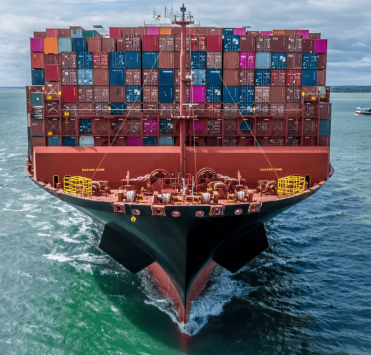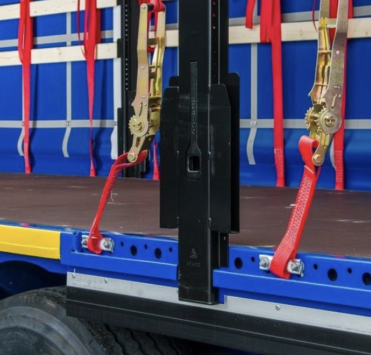Documentation for container shipments to Ukraine: a complete guide

Container shipping to Ukraine is one of the most popular and convenient ways to deliver cargo to Ukraine. Correct and timely execution of documents plays a crucial role: it determines the speed of customs control, absence of fines, as well as the final cost of carriage. Below we will look at the key documents (export declarations, invoices, bills of lading, certificates), review the customs clearance process and give practical recommendations on how to simplify import and export operations.
Importance of correct paperwork when shipping to Ukraine
In international container shipping, any error in documents can lead to delays at customs, fines or even confiscation of cargo. In addition, the reputation of the shipper/importer is highly dependent on how smoothly and quickly the delivery of goods is organised.
Key factors affected by documentation
- Customs clearance: correct and complete paperwork speeds up the release of the shipment.
- Financial risks: incorrect paperwork leads to additional duties, taxes and fines.
- Safety: availability of all permits and certificates confirms the compliance of products with the legislation of Ukraine.
- Reputation: partners and clients appreciate suppliers who comply with all formalities and guarantee timely delivery.
Export declaration: what is it and why is it so important?
The concept of export declaration
The export declaration (EX1 for EU countries and similar forms in other regions) is the main document confirming the fact of exporting goods abroad. It specifies:
- Information about the consignor and consignee;
- Full description of the goods;
- Customs codes of goods (HS);
- Terms of delivery (Incoterms);
- Weight, number of places and other parameters.
Why do I need an export declaration when shipping to Ukraine?
- Customs control: the declaration provides a basis for verifying the authenticity and conformity of the cargo with the declared characteristics.
- Tax benefits: in many countries, exports may be eligible for VAT refunds or other benefits - a properly executed declaration is proof of this.
- Simplified import procedure: Ukrainian customs requires official confirmation of the origin of the goods and the conditions of shipment.
Important points when filling out an export declaration
- Correct HS codes: thecorrect classification depends on the rate of duties and step-by-step procedure of registration.
- Indication of delivery terms (Incoterms): CIF, FOB, EXW, DDP, etc.
- Accurate weights and quantities: any discrepancy with the actual parameters may result in inspections and fines.
Tip: Always double-check the numbers and codes in the declaration (especially when dealing with large consignments). Errors in documents are a common cause of delays at customs.
Invoices and packing lists: Why are they necessary?
Invoice
An invoice is a financial document that reflects the transaction value, payment terms and basic information about the goods. It always accompanies the shipment and is one of the main papers for customs valuation.
The main items on an invoice are:
- Name, address and contact details of the seller (exporter) and buyer (importer);
- Date and number of the invoice;
- List and description of goods (articles, characteristics);
- Price per unit and total cost;
- Terms of delivery (Incoterms);
- Bank details (if required).
Packing List
The packing list contains a detailed description of how the goods are packed: the number of boxes, the weight and volume of each box, the exact list of items inside. It helps to:
- Quickly check the actual packing against the documents;
- Facilitate customs inspections and reduce the time of inspections;
- Eliminate confusion when assigning goods to containers.
Tip: Make sure that the names of the goods on the invoice and the packing list match. Any discrepancies will arouse suspicion on the part of Customs.
The Bill of Lading is the key to ownership of a shipment.
What is a Bill of Lading?
TheBill of Lading (B/L) is the main document for containerised sea freight. It confirms the ownership of the cargo and regulates the conditions of carriage. It is issued by the carrier (sea line or freight forwarder) after loading the container on the ship.
What data does the bill of lading contain?
- Name of the carrier and information about the vessel;
- Data of the sender and the consignee;
- Description of the cargo: name, weight, number of pieces;
- Port of departure and port of destination (Odessa, Chernomorsk, Pivdennyi, etc.);
- Freight conditions (payment, responsibility of the parties);
- Type of bill of lading (direct, warrant, registered);
- Date and place of issue.
Types of Bills of Lading
- Master Bill of Lading (MBL): issued by the shipping company and reflects a direct relationship with the carrier.
- House Bill of Lading (HBL): issued by the freight forwarder on his own behalf. You can also get additional turnkey logistics services from the freight forwarder.
Nuances of the B/L
- Accuracy of cargo space and weightdata: they must correspond to the invoice and packing list.
- Correct indication of the consignee: if the data is incorrect, there may be difficulties in releasing the cargo at the port.
- Type of Bill of Lading (Original/Telex Release): affects the procedure for receiving the shipment.
Certificates: mandatory and additional documents
Certificate of Origin
In many cases, when shipping goods to Ukraine, a certificate of origin is required (e.g. form ST-1 for CIS countries or EUR.1 for EU if there is an association agreement). The document confirms that the goods were produced or processed in the declared country.
Reasons for obtaining a certificate of origin:
- Obtaining favourable duties and tax exemptions;
- Compliance with Ukrainian legislation for certain categories of goods;
- Confirmation of ‘clean’ production chain (important for food products, organic products, etc.).
How to obtain EUR.1 certificate when exporting to Ukraine?
- Apply to the Chamber of Commerce and Industry or an authorised state body in the exporting country.
- Provide documents on the origin of raw materials, consignment notes, production specifications.
- Fill in the application form, pay the fee (if stipulated by the legislation).
- Attach the obtained EUR.1 certificate to the accompanying documents when sending the shipment.
Sanitary-hygienic, veterinary and phytosanitary certificates
If you are importing to Ukraine goods that fall under the control of the relevant services (foodstuffs, plants, animals, cosmetics, etc.), you will need:
- Phytosanitary certificate (for plants and derivatives);
- Veterinary certificate (for animals and animal products);
- Certificate of compliance with sanitary norms (for goods in contact with humans: cosmetics, hygiene products).
Requirements for phytosanitary certificate for import of products of plant origin
- The document must be issued by the competent authority of the exporting country;
- It contains information on plant species and varieties, degree of treatment, storage conditions;
- The absence of quarantine organisms confirmed by laboratory tests is obligatory.
Quality certification
A number of goods (for example, household appliances, electronics, construction materials) in Ukraine are subject to mandatory certification of quality and safety. The list of such products is regularly updated, so it is recommended to check the official database of Ukrainian legislation.
Tips to optimise and reduce risks
- Use electronic document management: Ukraine is introducing electronic declaration filing systems (EDEC), which simplifies the process and reduces paperwork.
- Use trusted logistics companies: professional logistics companies take care of the preparation and verification of all documentation.
- Regularly check for changes in legislation: regulations and procedures may change, keep up to date with official sources and industry news.
- Plan container loading in advance: prepare a full package of documents (export declaration, invoice, bill of lading, certificates) before the container is dispatched.
Ready for fast and safe delivery of your cargo with Save Pro Solutions?
Trust us with your logistics! Save Pro Solutions team will provide professional support of container transportations and guarantee prompt customs clearance.
Contact us to:
- Get personalised advice on export and import documents;
- To find out actual tariffs and terms of container transportations to Ukraine;
- Order full logistic support from ‘A’ to ‘Z’ - from preparation of documents to delivery of cargo to your warehouse.
Contact us today - we will find the best solution for your container transportations!









